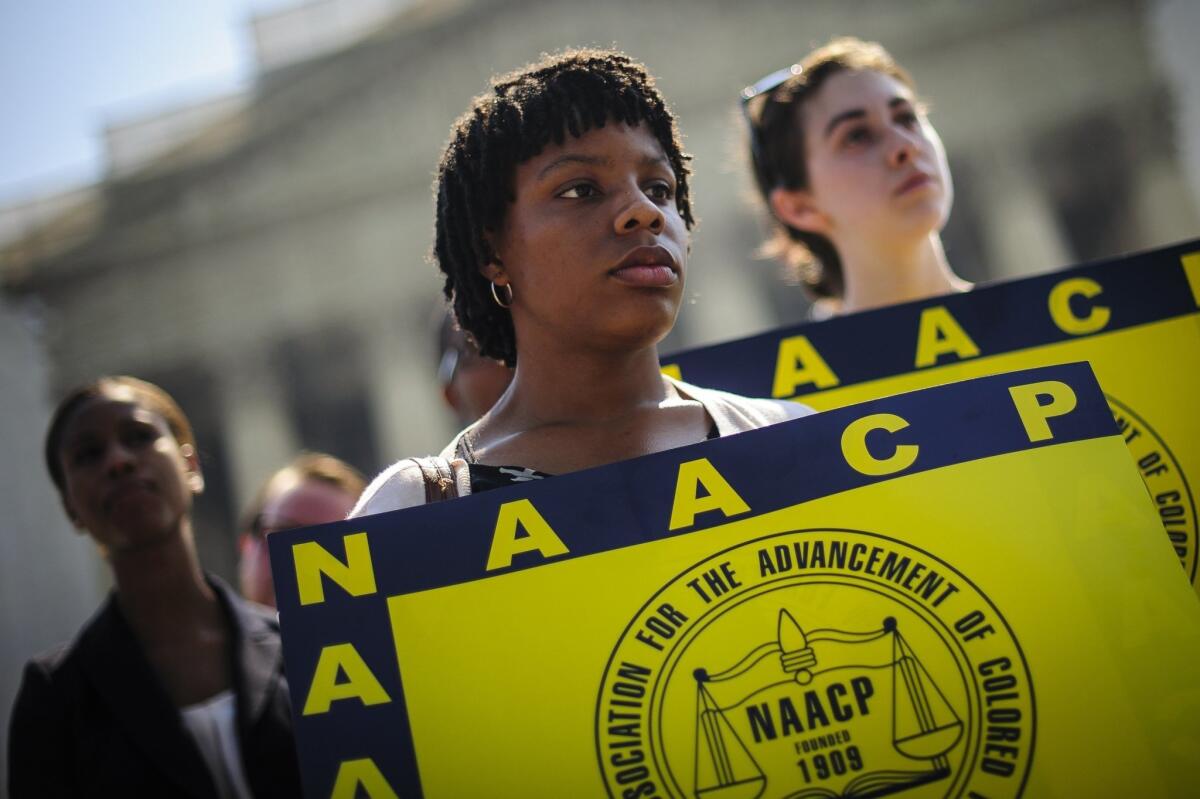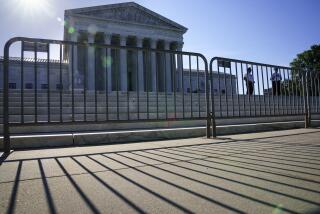Repairing the Voting Rights Act

- Share via
When the Supreme Court struck down a key portion of the Voting Rights Act last year, it seemed impossible that a divided Congress would be able to agree on new legislation that would satisfy the court’s concerns and restore robust enforcement of the landmark civil rights law. But a creative new proposal may confound the cynics.
Last June, the court by a 5-4 vote struck down the formula used in the Voting Rights Act to determine which states and localities must “pre-clear” voting procedures with the Justice Department or a federal court in Washington. Although all 50 states are prohibited by the Voting Rights Act from engaging in racial discrimination in voting, pre-clearance made it harder for states with a history of discriminating against African Americans and other minorities to slide back into their old ways.
In rejecting the coverage formula, Chief Justice John G. Roberts Jr. complained that it was rooted in data from the 1960s and ‘70s and didn’t reflect current conditions, including dramatically increased participation in the political process by African Americans in the Deep South. “Things have changed,” he wrote.
PHOTO ESSAY: Highs and lows at the Supreme Court in 2013
After the decision, Atty. Gen. Eric H. Holder Jr. called on Congress to enact a new version of the provision struck down by the court. Meanwhile, Holder moved to make greater use of another part of the law that allows judges to “bail in” for federal pre-clearance states that have violated voting rights. The problem with the bail-in strategy is that while other parts of the Voting Rights Act prohibit practices that have a discriminatory effect, states can be bailed in to pre-clearance only if they have been guilty of intentional racial discrimination. That leaves untouched policies that, whatever their motivation, make it harder for minorities to elect candidates of their choice.
The bill proposed by Sen. Patrick J. Leahy (D-Vt.) and Rep. Jim Sensenbrenner (R-Wis.) would solve that problem by allowing judges to order pre-clearance if a state has adopted policies that have the effect of discriminating against minorities. A separate provision proposes new rules for automatically triggering pre-clearance: For example, a state that committed five voting violations over a 15-year period would be subject to federal scrutiny of election changes for a period of 10 years. If it were in force today, the proposed formula would require pre-clearance of election changes in four states: Georgia, Louisiana, Mississippi and Texas. But other states could be added if they were found to have violated the law.
The new formula remedies the constitutional problem the court identified.
Some civil rights activists worry that the bill’s definition of voting rights violations explicitly excludes objections by the Justice Department to a photo ID requirement. Their concern is understandable, given evidence that photo ID requirements disproportionately inconvenience racial minorities, the poor and the elderly. But it is outweighed by the fact that the legislation would repair much of the damage inflicted on voting rights by the court’s rash decision.
There was a time not that many years ago when both parties in Congress recognized the importance of protecting the right to vote. The Leahy-Sensenbrenner bill offers an opportunity to recover that consensus.
More to Read
A cure for the common opinion
Get thought-provoking perspectives with our weekly newsletter.
You may occasionally receive promotional content from the Los Angeles Times.










